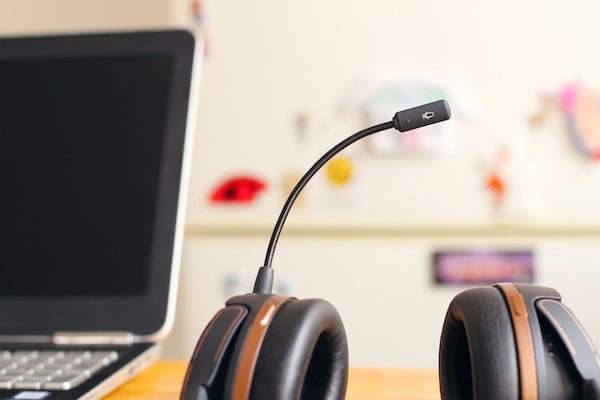Published on
Established Online Education is Not Immune to COVID-19: Strategies for Serving Students During the COVID-19 Pandemic
Jamie Holcomb | Vice President of Academic Strategy and Faculty Success, Unitek Learning
Jeffrey Hall | Collegiate Professor, University of Maryland Global Campus
Ryan Korstange | Assistant Professor, Middle Tennessee State University

Students who were taking college classes exclusively online prior to the COVID-19 pandemic are affected by it, too. To this point, much press has been devoted to the transition of traditional campus courses to remote learning as required by social distancing. There has been little discussion, however, about existing online students, the effects of the pandemic on their learning and requisite programmatic changes in the face of this reality.
At a structural level, online course offerings can operate “as normal.” The instructional technology to enable remote learning has already been purchased. Faculty and students both know how to use the ed-tech applications that house their learning. Learning at a distance from the institution is built into the fabric of online learning, and by-and-large, these structures facilitate meaningful learning for the students enrolled.
COVID-19 is indiscriminately tearing through the United States. It is not prejudicial in it infects. And college students–both those taking online and those in face-to-face courses— have all been affected. Being enrolled in online courses offers no protection from the pandemic. The effect is sobering: massive job loss, children out of school and at home, required physical distancing from all but those who live in your household and strict orders to refrain from leaving it. These changes result in increased stress and anxiety, and potentially in the exacerbation of mental health issues. Further, not all students are safe at home. Some struggle to meet their basic needs. Despite the structural appearances of normalcy, online learning is not the same during the pandemic, and we cannot treat it as if it were.
This article aims to provide four simple considerations that online programs and online instructors should keep in mind as they figure out how best to support students and their learning during the COVID-19 pandemic.
Online learning can be an escape from COVID-19
To escape the constant COVID-19 coverage in the era of the 24-hour news cycle, adults need to find ways to distract their minds to lessen stress and anxiety. According to an article published by the BBC, distractions can help alleviate the feeling of being overwhelmed and even lower blood pressure during stressful events like a worldwide pandemic. As stay-at-home orders extend and boredom mounts, pursuing an education can become a welcome distraction for both new and continuing online students. Attending school may be the only regular activity that online students can rely on in these uncertain times.
Building rapport and trust between faculty, staff and students is more critical than ever during a national lockdown. According to one faculty member teaching at an online university, “More students than ever showed up to my optional live chat session, including one joining from the ICU where she was battling COVID-19! Other than a brief mention of the COVID-19 crisis, my students wanted to talk about the course content. They were looking toward the future versus dwelling on the present.” While it may seem like the present situation is a distraction from learning, anecdotal evidence from those teaching online indicate that it may be the best time ever to thoughtfully engage students who may be bored, anxious and looking for distraction. Giving students a reason to temporarily forget about the news, job uncertainty, childcare issues and other stressors can help them cope and provide them with a positive focus. While algebra or accounting do not seem like natural remedies for stress during crisis, engaging in meaningful learning and focusing online learners on the future may be critical to helping students positively and productively pass the time. Providing online students with a pathway that they can use when the current crisis is in the rearview mirror may be one of the best remedies available for a COVID-19-fatigued online student population.
Prioritize student mental health
Pre COVID-19, institutions of higher education worked to help make sure students felt connected and had a growth mindset because online students have been challenged with feeling isolated since the origin of distance education. With no confirmed end date to social distancing and mental health increasingly a focus in higher education, COVID-19 creates a context in which online institutions and programs are ill-equipped to support students. Unlike location-based campuses, mental health services and reporting are less well-developed. This is an opportunity for online education to re-evaluate procedures surrounding mental health and its responsibility to enrolled students. Without a doubt, students attending college online today will be experiencing sadness, mood fluctuation, worry, fear and anxiety. These symptoms all are impacted by the loss of loved ones, a job or income, or changing living conditions. We should also anticipate increased substance abuse, domestic violence and suicide.
There are many ways to support students during these times. Institutions should continue to help students by reducing stress, encouraging wellness programs, leveraging support resources like peer mentors, advisors and coaches, and promote mindfulness and growth mindset. Resources may also need to be reallocated to provide robust counseling and support services. Faculty and advisors need to be properly trained for when and how to report mental health issues, and mental health resources need to be readily available to students, even inserted into courses. Supplemental instruction might be given on self-care, including a focus on presence, daily meditation practice, reflection, gratitude and self-forgiveness.
Increasing support for online student mental health is long overdue, regardless of the current pandemic.
Be flexible and kind
Teaching students during this pandemic requires flexibility and kindness. Start by trusting students. The pandemic affects everyone differently and often in unexpected ways. If students choose to tell you they are struggling, don’t ask for verification–just trust them. Trust also requires that we be honest with them about our experience during the pandemic.
Students learn more and persist longer when they feel valued by the institution, recognize that the curriculum has value, and find belonging within the institution. Now more than ever, it is imperative that students not be treated as aggregate numbers but that they experience the personal touch.
Finally, student satisfaction is higher when students have the ability to demonstrate agency. While it is not possible to give students unlimited choice in any class, let alone classes offered during the pandemic, it is important to give students real choice in their work. One strategy for increasing agency would be to allow students to relate their experience of the pandemic to the material being covered in class. It also would be worth considering offering alternatives for major assignments in different modalities. Giving students the choice between writing a reflection and recording an audio blog or vlog is one easy example. Allowing students some choice in the way they are assessed allows them to select options that appeal to them and therefore increases their satisfaction and quality of work.
Provide flexible two-way communication
People need people. The isolation we are all dealing with doesn’t magically disappear for online students who are used to learning in an online environment. Communication and connection to peers, faculty, advisors and support services must not only be encouraged but must be made readily available often. These services and supports and general availability must be shared frequently to students so that they can connect in a way that meets their needs. What students need one day may be drastically different than what they need the next.
Communication with online students cannot be only one way. We cannot simply send information out; we must take it in as well. We must also listen and make ourselves available to do so. Because we are online and largely asynchronous, we must listen between the lines to those things that may not readily be shared. We must, as Peter Drucker once said, “…hear what isn’t said.” Students may stop participating, work quality may falter, assignments may be late and comments in discussion forums may raise red flags. These are all signs we must look for to support students who need us in order to persevere.
Online learning isn’t one size-fits-all. Just because online learning was built to be mostly, if not all, asynchronous, doesn’t mean that it is the “size” that fits best right now. Online institutions should consider adding synchronous opportunities for students to connect with people in real-time. These can be small sessions with faculty or webinars with classmates, but opportunities for connection and communication are key.
Finally, online institutions should embrace user experience practices and simply ask students what they need. While some may choose not to share, others will provide insight that can help meet students where they are…wherever that may be.
Conclusion
Traditional campuses have had to redefine themselves and restructure student learning as a result of the COVID-19 pandemic. Online institutions are not immune to this pandemic or to the institutional reimagination that it requires. Online learning can no longer mean “distant” education. This is a time when people need to be more connected than ever, so institutions and programs must engage with students more meaningfully, get to know them and find ways to support their learning.
Author Perspective: Administrator



